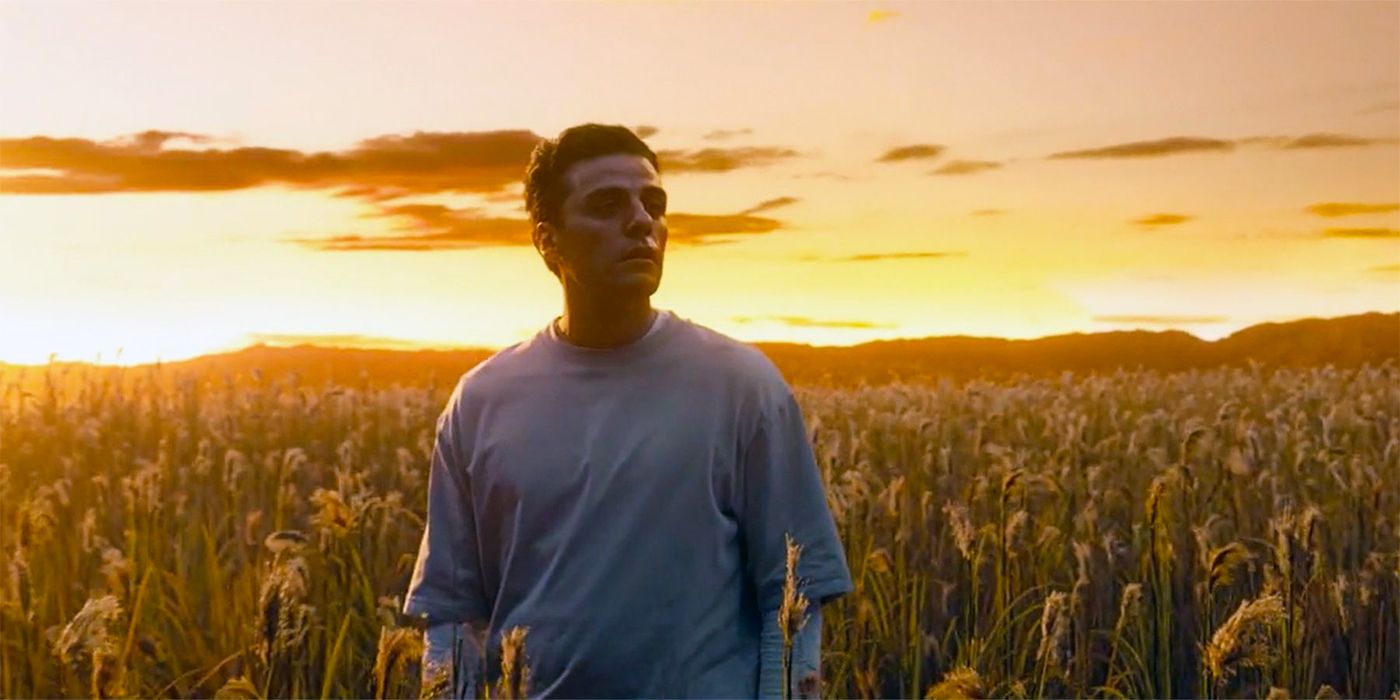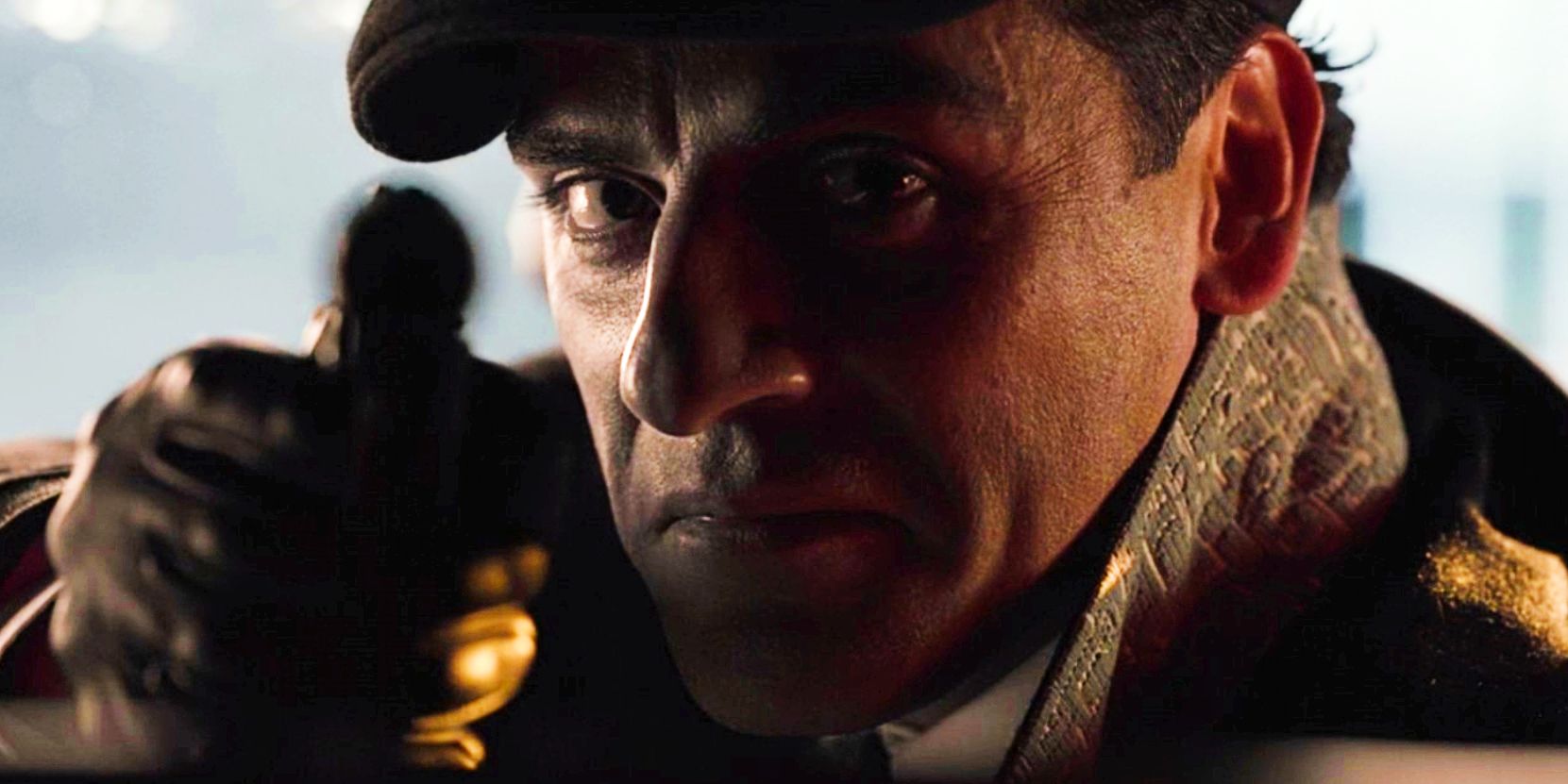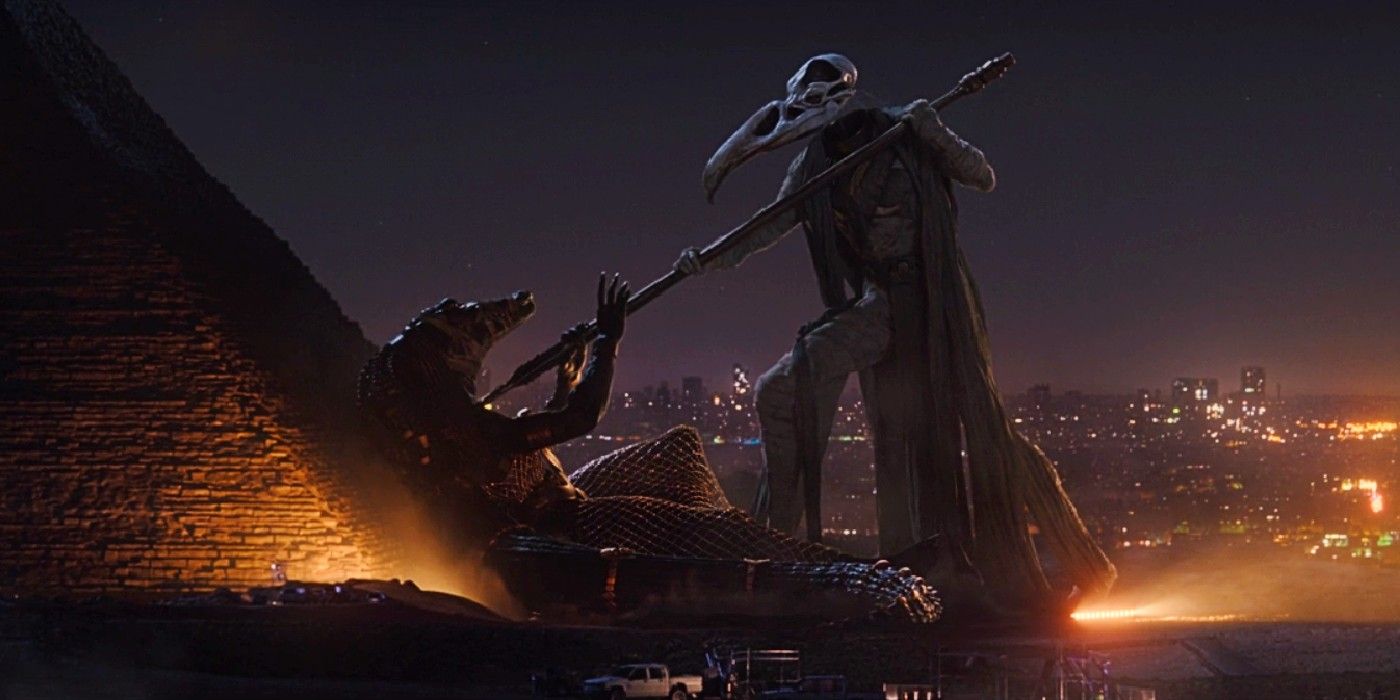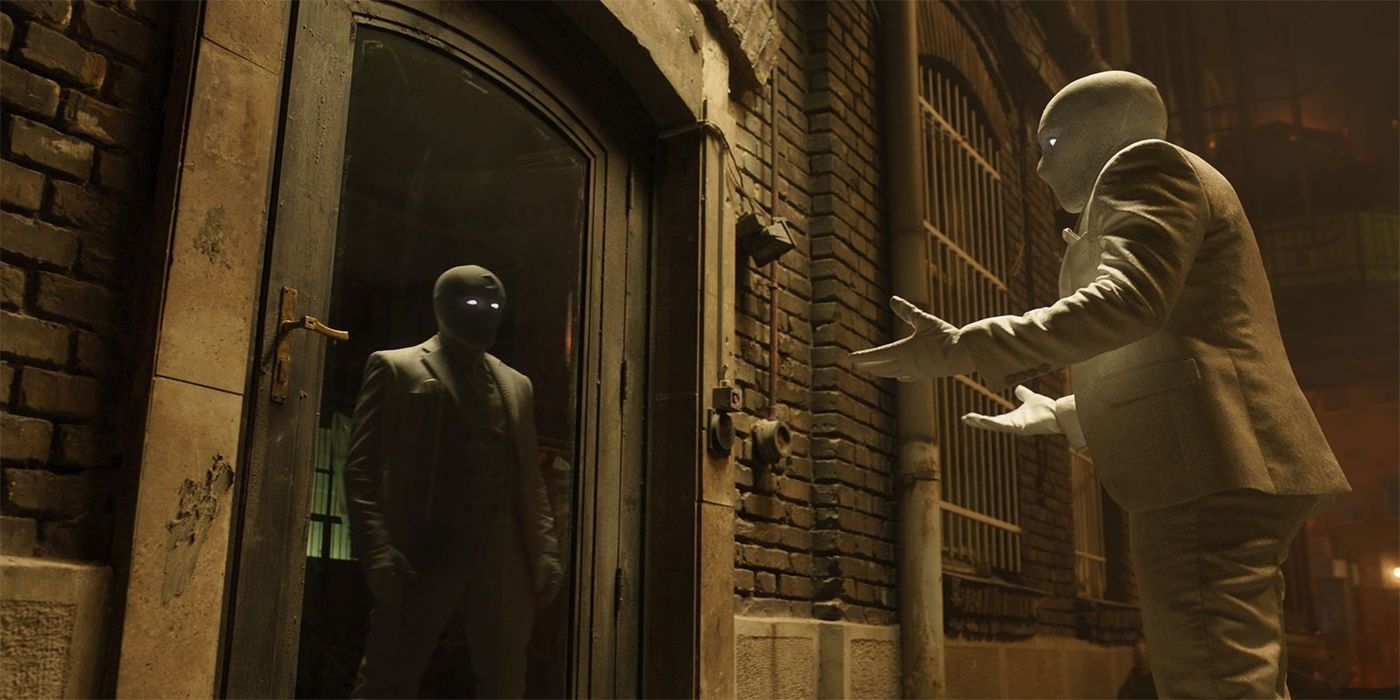Over a week after its finale, Moon Knight season 1 has remained in the consciousness of Marvel fans even as Doctor Strange in the Multiverse of Madness has dominated the movie theater box office as MCU films tend to do. Even though the latest entry into Marvel's television canon maintained a healthy distance from the larger storytelling universe, audiences have found a number of compelling threads that could carry over and even have questions about how certain events may be impacted by the upcoming Thor: Love and Thunder.
It is thanks to the steadfast vision of Moon Knight's creative team that Disney+ was able to take a gamble on material that was at times more mature and risky than its viewers are used to. With a commitment to investing in comic lore and also expanding the MCU's diversity, the series introduced a Jewish protagonist with Dissociative Identity Disorder, and also introduced the first Egyptian superhero into the franchise. Furthermore, the show manages to tell a self-contained story while still leaving fans with a taste of what could come should there be a Moon Knight season 2.
Screen Rant got the chance to speak with Gregory Middleton, who was one of the two cinematographers who worked on Moon Knight, about certain camera tricks and creative choices made to distinguish Marc from his alters as well as how he and fellow DP Andrew Droz Palermo worked together to make the series as seamless as possible.
Screen Rant: The last two episodes of Moon Knight were the trippiest of the first season. Especially episode 5, which just drops you right where the last one left off. How did you make sure it was a smooth transition from the work that Andrew Droz Palermo did?
Gregory Middleton: Andrew and I prep the sets that we do together, because we both are shooting that set. We would share the plans about how we were going to light it, we'd do our test together and all that. We would agree on what we're going to do together, so it is kind of seamless that way.
Actually, in the original scripts before that team joined, that scene at the end of 4 was the beginning of 5. Episode 5 began with waking up in the hospital, and that was the beginning of that. I think it was smart to move that into 4, because it gave more room for what was going on 5; they were rebalancing the story of it.
But when you're working with another cinematographer, the big thing is that we rarely work to get work together. On a series we do sometimes, but we don't always get a chance to collaborate in the same way. In this case, when we're sharing a set, we just worked together on what the design would be, worked with Stefania [Cella] and the art department, and figured out what the actual plan would be for us. That set in particular needs to be self-lighting for a lot of things, because of the type of camera work we needed to do. We both had twin scenes, so it takes a lot of planning that we would do together.
I love how the scenes in the psychiatric hospital continued the theme of obscuring or twisting perspectives. What was it like filming Marc's memories through the windows, and how do you even conceive of something like that?
Gregory Middleton: I can't take credit for the conception of things. Some of that was in the original script, and I think Mohamed actually wanted to add more windows. Originally there were going to be many more membranes, but we had to reduce the complexity.
Every scene with Oscar playing two characters has to do multiple passes, either with a locked off camera or motion control when tracking the hallway shot, for example. Then we have to mimic how many we can do with that. One time we would change Oscar and would leave one camera set up in one window, so we could do one half of him looking in the window from inside of the room while we're doing another scene. We'd have to just try to basically double up the set ups as many times as possible, so when we change them once, we get as many pieces as possible. There was a limit how many we could do; we didn't have limitless cameras and limitless pieces of set we can leave set up and not to cause an issue.
But the basic plan is to work out the perspective you want to use for each scene. Episode 1 is like a horror story all from Steven's perspective, but at this point, it's a bit of a mystery for both of them. There's a lot of shell game hiding going on. Marc does not really want to show Steven what happened, and he doesn't want to relive it himself. He's resisting it; we don't really know what's coming up, and Steven certainly wants to know.
There's interesting dynamic where you're wandering into a constantly obscuring thing to try to get through. But there's a tug of war going through that thing, so to keep that point of view with them was more important. When you look over from the side of the bathroom mirror and see the fight, which we would all recognize from the end of episode 1, we didn't need to see the whole thing again. You just see enough of it to know that's what it is, which keeps you anchored to the character's reactions to it. They don't have each other's memories of these things, because only one is in control. Seeing their reactions and anchoring the camera to them on this mysterious journey was a more important factor.
We get the really exciting moment of Layla transforming into a superhero in the finale. How did you approach that, and how important was it to distinguish her as her own hero in comparison to Moon Knight?
Gregory Middleton: There were a few interesting things. There were some lines in the script originally, where I think she was asking about if maybe she can have wings or something when negotiating with Taweret. That scene was a bit longer.
The funniest and best part of that scene was shooting May [Calamawy] in the hallway, speaking as Taweret. Her performance in that was fantastic; she got all the little hand gestures, and she worked with Antonia [Salib] together. It was just a scream to watch that happen.
From a design standpoint, the interesting thing about doing something with as many characters as Marvel is that you want to avoid too many similarities. It's kind of like designing cars, they all have four wheels and a few doors - but there's a lot of Marvel characters in the comics, and they're always mindful of trying to distinguish them and also not repeat things or to take traits from one that they hope to put in a new character they're going to introduce.
I think the wings were a later addition. They took that out of the script, but it was cool to give her these longer knives at the end of her hands. It's kind of like how Steven found the nun chucks behind his back in episode 2. She's like, "What's this behind me?" and it's a surprise for her.
I think the most important thing design-wise for Meghan and everyone was to make her powerful and still feminine, and not some overly armored, giant, cumbersome thing. They wanted to [make her] a person, in the same way that Ethan did not want to wear a giant crocodile armor suit to be Ammit's avatar. It would have also been too many of these things fighting each other that are all just clamored up, armored people. Ethan's way more intimidating with his full face exposed, able to move the staff around. A demented David Koresh with a magic staff is a bit more frightening, whereas somebody with giant crocodile armor would not have been as interesting.
Speaking of giant crocodiles, we get this Godzilla versus King Kong style fight with Ammit and Khonshu. What was it like building that scene and approaching the filming of it?
Gregory Middleton: The full CG characters are all done in visual effects, so the biggest plan for that scene was to see it from the ground perspective a lot as they become huge monsters. And we did look at all the references, like, what are the really well done, large, heavy beasts? How much motion should there be? In Pacific Rim, the first one by Guillermo Del Toro, there's a really great feel of mass. In the sequel, they kind of move so fast that it's almost like they're human-sized people, even though they're giant.
It's a quite a tricky thing to do, because it's totally unreal. Nothing could ever be that high and move that quick. That was a big thing for the animation to mimic, and then to figure out the character of the fight. Because as Khonshu's losing, Moon Knight's getting weaker and Harrow's getting stronger. It's running the parallels between that fight and the fight on the ground, from a story standpoint.
The other thing was to keep us having an interesting perspective, looking up with these gods. When Harrow walks up to Moon Knight in the end, and Khonshu's getting the crap beaten out of him, that tells you in the audience like things are going bad and the shift of power is going against Moon Knight before Jake Lockley emerges. We want to make sure you get those moments ideally within a shot. In our backlot set for Cairo, there's a low enough building where we can put Ethan and have them in the background.
When you're basically watching Khonshu being dragged off to be executed by Ammit, you just want to put that in the same shot. Then you don't have to cut to a separate thing. And when we go into the fight between Ammit and Khonshu, that is their scene. They're on equal terms with their debate; their lover's quarrel that's gone wrong.
That's a great way of putting it; a lover's quarrel gone wrong.
Gregory Middleton: I don't even know if that line made it. There were lines before that they were romantically entangled. It was implied in some of their dialogue, but I think some of the dialogue might have been removed.
While the big Jake Lockley reveal is in episode 6, there have been moments leading up to it. How were you consciously working towards that reveal in your episodes?
Gregory Middleton: We always wanted to hint, mostly for people that know the comics, that there are three main personalities. In the comics, there's also been a Moon Knight personality, but the three seemed like the most you would want to know might be happening.
There are a lot of threes in reflections, even in the first episode we get the three mirrors. Even if you don't know the comic book character, ideally and visually, as you start to become aware that this double life is happening, it puts the idea in the audience's mind that there could be more. We keep seeing multiples of him everywhere, so who says it has to stop at two? You want that to be an open question. But we didn't do it in too big into it. Mohamed really pushed for the blink thing happening with Jake in episode 3, to plant [the idea] that there's something else going on.
And it was a way for Marc to experience what Steven goes through. Because part of their understanding of each other is one that life is a bit of a nightmare for both of them in different ways. Mirroring those two experiences to help bring them together as characters was very, very smart. Jake was a great way to do that, and it also leaves a big question of, "What is going on?" When he wakes up with a knife in the guy's belly in 3, it's like, "Okay, that was probably not Steven." It's a great way to bring them together.
I wasn't sure what we were going to do with Jake. I was a little personally concerned that maybe not ever seen Jake do anything might be too much at the end. Episode 6 changed quite a bit, script-wise. The last scene in the hospital with Ethan, where Steve and Marc both just flip back and forth now as kind of one person, and Harrow's surprised by that, that originally came before resurrection. That was after going to the gates of Osiris in the original draft. That's when they realize, "Hey, this whole thing is a construction for us." Then have to take action to start the real world, and that scene is about realizing they've figured this out now.
It's the same scene now, but it plants a different idea of moving on with life as opposed to just going to save the world. I think for the momentum of the story, it was probably better to let them rush back, get in the suit, and get into Cairo. But it did make me wonder how we were going to do Jake, and if it might seem like maybe too much of Jake as the one that could do everything. And not about Mark conquering his personal issues; making up with himself, having peace with himself, and having the strength to kind of conquer everything.
We sort of landed where we do both, I think.
If we get a season 2, assuming that you would be involved in it, what other aspects of Egyptian mythology or Moon Knight lore would you love to get into?
Gregory Middleton: Last time I saw Oscar after the premiere, we were talking about that. But when Oscar made Steven, he was this more bumbling, almost over-the-top character. He's entertaining, he's quite sweet, and he also has things he wants to get. He didn't have a date; he wants to have a life - you care about this character, but he has his own way. The split in the comics is not that distinct.
In some way, Steven was created to shield Marc from this abuse. But when Jake was hinted at, he's the stabby one, I guess. Jake's first thing would be to grab the fork and stick it in your hand, as opposed to ask for your attention. There's something interesting about him being a real dark side, and a physical protector that comes out when Marc's about to die. Marc has no control over that, so maybe he's the much more violent, ruthless character that would come out. There's real consequences when he comes out, and they're usually negative, right?
People who have anger and rage issues, the biggest problem is the carnage you create afterwards. Jake clearly does not care about that. But maybe he serves a purpose inside Marc for some reason. I think there could be something really interesting with him as an exploration of a dark side.
I have no idea what they would want to do with anything else. I don't think Oscar signed on for multiple things. If they decide to do something with the character and all agree it's going to be great, he definitely would come back to do it. It is also an incredibly arduous thing for him to play multiple characters - it's difficult for everybody involved to do a complex scene with multiple characters, but for performer, it's really a lot of work. He even mentioned to me, "I kind of underestimated how hard it was gonna be. It's one thing to do that, but every blocking scene, I've got to play both parts to figure it out and engineer both performances in advance." It's a lot of heavy lifting.
Doing three would be great, though! I love the idea of Steven and Marc being trapped in a mirror, watching Jake do something. That image could be great. They're like, "What's going on?" There could be some really interesting ideas there. I don't know what they're going to come up with, script-wise, but I'm sure there's a motivation to try and find something.
We also got to see Moon Knight's first transformation thanks to Khonshu in one episode, and then in the next we get the rebirth transformation. How do you approach two very different versions of such a similar event?
Gregory Middleton: I'm really proud of that whole sequence. It's quite moving, because Steven Grant is realizing, "Holy cow, your life is awful. This is terrible!" Marc feels like he couldn't save Layla's dad, and he only met her afterwards, so that's already horrible. He can also see that, essentially, Marc's in an abusive relationship with Khonshu. Khonshu's manipulative, and Marc was weak. He was dying - and not only that, he was suicidal.
I think that was Oscar's idea on the day, that moment, and it was super powerful. As much as the reveal of a costume, armored, superhero god is a triumphant moment - it's kind of not. I love the fact that the scene is a bit of both. It does start this terrible journey where he's gonna have to go be this murderous thing for Khonshu and be manipulated constantly, so it has this nice little twist of a moment that's bittersweet. Running between those things was kind of important.
The one thing I wanted to do with the transformation was make sure we had a nice, low three-shot with the statue and Khonshu and Moon Knight. Something that was very graphic, out of a comic book panel, with lots of diagonal line. Making him heroic, but with these things looming over him. The puppet master's there, so you want to frame it that way. That was a distinct thing, whereas the other one is shot much from the front. That one's all about him; he has got himself to this point, and he is the powerful thing in this part of the story.
It's a nice, centered frame on him with a beam of light from the temple. It makes him the star of that moment, because this is a choice he's made. He's come back; he's sacrificing stuff for this. This is not him being manipulated to do it. He's like, "I'll do that to save the world." Visually, you ty and do things to make him more the focus.
Moon Knight is not the only time that we have seen a pantheon of gods. With Thor: Love and Thunder bringing us Gorr the God Butcher, how do you imagine him versus Moon Knight's gods would turn out?
Gregory Middleton: I don't know much about the plot, but based on the comics, they don't stand a chance. In the train the trailer, Thor's sitting in front of that huge dinosaur creature that's dead, and he's kind of like, "Nobody should be able to kill my friend." It's that look on his face.
And I think that's hinted at in the idea that they're missing gods already in the Egyptian pantheon. Not all nine avatars are there, and that was definitely hinted at that. By the time we come out, those events could probably be starting.
But we didn't linger on that stuff. I think they were very smartly trying to make our show distinct and not spend a lot of energy and screentime establishing what things are going on in the rest of the Marvel Universe with our show. Because it is a very intimate story about one character dealing with stuff and everything's connected to that journey.
More Moon Knight Interviews
Moon Knight follows Steven Grant, a mild-mannered gift-shop employee, who becomes plagued with blackouts and memories of another life. Steven discovers he has dissociative identity disorder and shares a body with mercenary Marc Spector.
- Ethan Hawke
- May Calamawy
- EP Grant Curtis
- Directors Moorhead & Benson
- Composer Hesham Nazih
- Director Mohamed Diab
Moon Knight season 1 is currently available to stream on Disney+.








